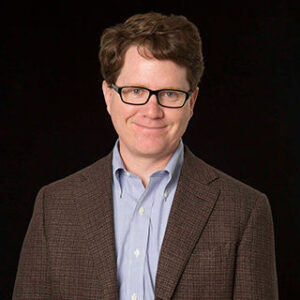
The Metropolitan Museum of Art possesses the finest, most comprehensive collection of Medieval and Byzantine art in the western hemisphere. It is held in two locations: the galleries of the Met’s main building on 5th Avenue and The Met Cloisters in Fort Tryon Park. John D. Rockefeller, Jr. (1874-1960) provided funds that enabled The Metropolitan Museum of Art to purchase the Cloisters museum and its collections from George Grey Barnard in 1925. Dr. C. Griffith Mann will discuss the role played by Rockefeller in the development of the Cloisters.
Dr. Mann was appointed The Metropolitan Museum of Art’s Michel David-Weill Curator in Charge of the Department of Medieval Art and the Met Cloisters in September, 2013. In this role, he is responsible for the medieval collections and curatorial staff in the Met’s main building, and for directing the staff and operations of the Met Cloisters, the branch of the Metropolitan Museum dedicated to the art and architecture of medieval Europe. Dr. Mann received his B.A. in art history and history from Williams College, and his Ph.D. in medieval art from The Johns Hopkins University. A specialist in the arts of late medieval Italy, he has published on civic patronage, painting, and devotion in Tuscany. As a curator, Dr. Mann has worked on exhibitions on the medieval cult of relics, the art and archaeology of medieval Novgorod, and French manuscript illumination of the 13th century. He formerly served as the Chief Curator and Deputy Director at The Cleveland Museum of Art, where he helped to lead the museum’s reinstallation, acquisition, and exhibition programs, and as medieval curator and Director of the Curatorial Division at The Walters Art Museum, where he worked on exhibitions and the permanent collection.
Arranged by Bryan Hooper
Bryan’s notes on the talk:
Dr. C. Griffith Mann spoke to the DMA for the third time in the past twelve months about the history of the Met Cloisters museum in Manhattan, concentrating his narrative on the role played by John D. Rockefeller, Jr. in the development of the museum.
The medieval art at the Metropolitan Museum of Art was initially gifted mainly by J.P. Morgan, and The Cloister’s collection was established by sculptor George Grey Barnard, a friend of Rodin, on a property in Manhattan overlooking the Hudson. Barnard was introduced to Rockefeller by William Bosworth, an architect who had designed a house for Rockefeller’s father and had commissioned Barnard to design some sculptured pieces for the grounds. Barnard, eternally in debt, sold his collection of European architectural artefacts to John D. Rockefeller, Jr., and the collection was donated to the Met in 1925. Rockefeller was involved in a wide range of philanthropic ventures, having become president of the Rockefeller Foundation in 1913, and in 1930 he offered to donate and develop land at Fort Tryon to house the collection. Bosworth hired architect Charles Collens in 1933 to design the Cloisters buildings and a four acre park on the land surrounding it. Development commenced in 1935, and the grand opening was in May 1938. The influence of Rockefeller persists to this day, as the endowment created by the foundation for the museum enabled the Cloisters to manage and survive the financial problems created by the Covid virus.
Griff Mann’s presentation contains illustrations of some of the beautiful objects housed in the Cloisters collection, including parts of the seven Unicorn Tapestries: be prepared for a future talk highlighting that famous collection. See the video at: https://youtu.be/NXigtpSYDAg.
